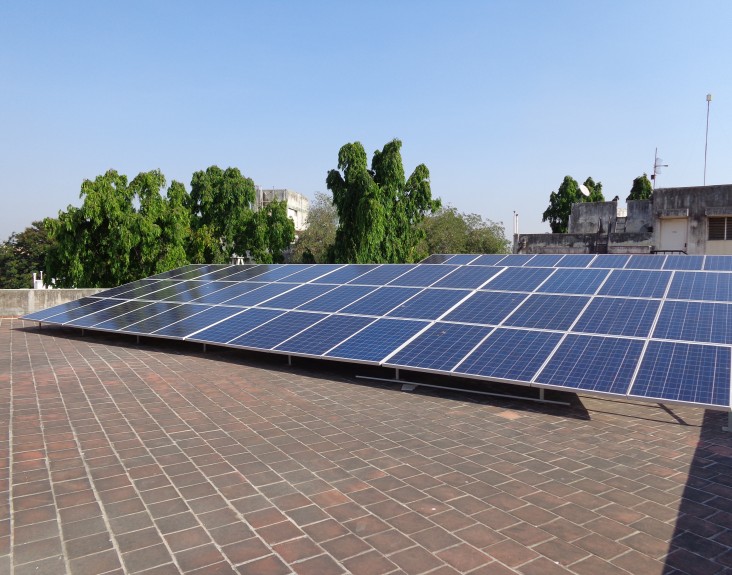India
- History
- Our Work
- Transforming Development Through Innovation & Partnership
- U.S.-India Triangular Cooperation
- Partnership for Energy Access and Security
- Partnership for Sustainable Forests in India
- Partnerships for Health
- Partnership for Education
- Partnership for Water Sanitation and Hygiene (WASH)
- Partnership for Food Security
- Partnership for Gender Equality
- Investing in Afghanistan
- Foreign Assistance Data
- Newsroom
- Newsletters and Fact Sheets
- Speeches
- Resources For Implementing Partners (RFIP)
- Careers
- Partnership Opportunities
- Success Stories
Speeches Shim

USAID/India, in partnership with the Government of India, and the U.S. and Indian private sector, focuses on assisting India and other South Asian Countries to transition to a “high-performing, low-emission, energy secure” economy by improving access to reliable and clean energy, growing investment opportunities in India’s estimated $1 trillion energy market.
USAID/India’s energy program focuses within the South Asia region and supports the U.S. government’s Indo-Pacific Energy Initiative: Asia EDGE (Enhancing Development and Growth through Energy). Asia EDGE is a whole-of-government initiative to grow sustainable and secure energy markets throughout the Indo-Pacific region.
ELEVATING U.S.-INDIA ENERGY PARTNERSHIP
Energy is among the four strategic areas of partnership between the United States and India. In 2018, both countries announced the “U.S.-India Strategic Energy Partnership (SEP)” to expand engagement through government and industry channels. USAID/India, one of the implementing U.S. Government agencies under the SEP, is helping India achieve key national energy priorities, including components of “Power for All”; meeting its target of 175 gigawatt of renewable energy capacity by 2022; and modernizing the energy sector. USAID’s development investments work in high-impact areas to improve market-friendly policies and regulations, institutional and human capacities, and availability of financing to enable private sector participation in the Indian energy sector.
GROWING ENERGY MARKETS IN SOUTH ASIA
Under Asia EDGE, USAID/India is the South Asia regional hub for USAID Missions in the region. South Asia, the fastest growing region in the world, has far lower per capita energy consumption than the global average. Additionally, South Asia’s burgeoning environmental challenges include a public health crisis due to air pollution, for which energy processes are a significant contributor. USAID/India’s regional Energy Program encourages countries in the region to develop an appropriate mix of power solutions to provide access to sufficient, reliable, and affordable power to reduce poverty, drive economic growth and job creation, and to increase energy security Additionally, it leverages the leadership of India and its private sector to achieve regional outcomes through four components:
- REGIONAL ENERGY MARKETS AND INTEGRATION: South Asia is the least integrated region in the world, trading approximately 2,500 megawatt of power through bilateral cross-border trade, which about 1.5% of the installed capacity. USAID/India enables greater integration of electricity and natural gas markets through regional roadmaps, harmonized policies and regulations, effective regional entities and networks, and cross-border infrastructure.
- ADVANCED ENERGY SOLUTIONS AND SYSTEMS: Advanced energy solutions and systems such as renewable energy, distributed energy resources, sustainable building technologies, and air pollution control will address economic and environmental challenges in South Asia’s energy sector. USAID’s initiatives provide inputs to policies, regulations, standards and incentive structures; build institutional capacity to ready the sector for future energy systems; pilot new technologies and business models; identify and fill technological and human resource gaps; facilitate domestic and regional electricity market platforms; and enhance consumer adoption of advanced energy technologies.
- UTILITY MODERNIZATION: South Asia’s electricity sector is dominated by state-owned utilities suffering from high system losses, poor credit ratings, and limited capacities to adopt next-generation technologies and business models. USAID’s initiatives focus on energy sector reforms to improve the financial performance, operational efficiency and adaptability of public utilities through the adoption of smart grid technologies; flexible generation of coal plants; design of power markets; new operations and management practices; and balanced gender diversity in management and technical positions.
- PRIVATE SECTOR PARTICIPATION AND ENGAGEMENT: South Asia’s infrastructure investment and finance are primarily driven by the state with a 3:1 or higher ratio of public to private finance. High reliance on overstretched government budgets has constrained infrastructure development in the region. USAID’s energy work will enable improved procurement practices at the national, state and subnational level; remove barriers to the participation of international actors through fair and transparent policies, guidelines, and tools; increase awareness and adoption of quality and safety standards; adopt innovative public-private partnership (PPP) models and risk-mitigation instruments, and enable project financing through innovative financing mechanisms.
|
Achievements
|


Comment
Make a general inquiry or suggest an improvement.